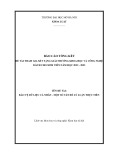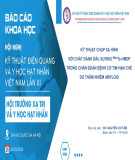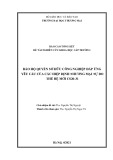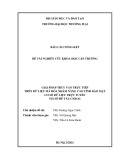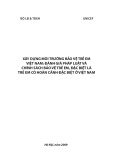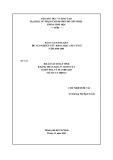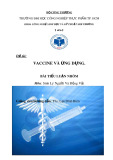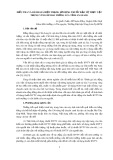
BioMed Central
Page 1 of 14
(page number not for citation purposes)
Journal of Negative Results in
BioMedicine
Open Access
Research
Human spongiosa mesenchymal stem cells fail to generate
cardiomyocytes in vitro
Svetlana Mastitskaya and Bernd Denecke*
Address: Interdisciplinary Centre for Clinical Research (IZKF) "BIOMAT.", RWTH Aachen University, Aachen, Germany
Email: Svetlana Mastitskaya - svetlana.mastitskaya@googlemail.com; Bernd Denecke* - bernd.denecke@rwth-aachen.de
* Corresponding author
Abstract
Background: Human mesenchymal stem cells (hMSCs) are broadly discussed as a promising cell
population amongst others for regenerative therapy of ischemic heart disease and its
consequences. Although cardiac-specific differentiation of hMSCs was reported in several in vitro
studies, these results were sometimes controversial and not reproducible.
Results: In our study we have analyzed different published protocols of cardiac differentiation of
hMSCs and their modifications, including the use of differentiation cocktails, different biomaterial
scaffolds, co-culture techniques, and two- and three-dimensional cultures. We also studied
whether 5'-azacytidin and trichostatin A treatments in combination with the techniques mentioned
above can increase the cardiomyogenic potential of hMSCs. We found that hMSCs failed to
generate functionally active cardiomyocytes in vitro, although part of the cells demonstrated
increased levels of cardiac-specific gene expression when treated with differentiation factors,
chemical substances, or co-cultured with native cardiomyocytes.
Conclusion: The failure of hMSCs to form cardiomyocytes makes doubtful the possibility of their
use for mechanical reparation of the heart muscle.
Background
Human mesenchymal stem cells (hMSCs) are available
from bone marrow, umbilical cord blood and adipose tis-
sue. They are multipotent cells, which can differentiate
into specialized tissues, including bone, cartilage, fat, ten-
don, muscle, and stroma [1,2], and allow autologous
transplantation. Several studies have shown that hMSCs
are capable to differentiate into cardiomyocytes, smooth-
muscle cells, and even endothelial cells under certain con-
ditions [3-7]. MSCs transplantation obviates the need for
immunosuppression, even when allogenic stem cells are
used, since they do not express class II histocompatibility
complex and co-stimulatory molecules required for acti-
vation of T-cells [8,9].
Most studies on stem cell transplantation aimed at the
treatment of myocardial infarction in animal models and
human clinical trials have focused on the use of undiffer-
entiated stem cells, so that cardiomyogenic differentiation
would be expected to take place in vivo within a transplant
recipient. Nonetheless, since undifferentiated MSCs tend
to spontaneously differentiate into multiple lineages
when transplanted in vivo [5,10], it is likely that such
uncommitted stem cells may undergo unanticipated dif-
ferentiation within infarcted myocardium. This can in
turn reduce the clinical efficacy of the stem cell transplan-
tation therapy for myocardial infarction. Another major
consideration would be the safety of using uncommitted
cells for transplantation. Adult MSCs may differentiate
Published: 10 November 2009
Journal of Negative Results in BioMedicine 2009, 8:11 doi:10.1186/1477-5751-8-11
Received: 11 March 2009
Accepted: 10 November 2009
This article is available from: http://www.jnrbm.com/content/8/1/11
© 2009 Mastitskaya and Denecke; licensee BioMed Central Ltd.
This is an Open Access article distributed under the terms of the Creative Commons Attribution License (http://creativecommons.org/licenses/by/2.0),
which permits unrestricted use, distribution, and reproduction in any medium, provided the original work is properly cited.





